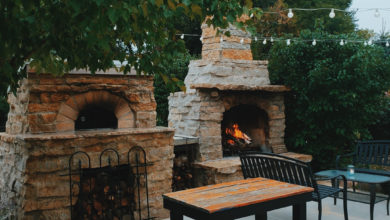Heating accounts for a large chunk of power consumption which in turn is responsible for a large part of the electricity bill we pay when the time comes.
Heating is often inevitable as it is one of the elements that make our homes comfortable, especially during the unforgiving winter.
It is always a welcomed idea if there is a way to cut down on the electricity bill. It becomes even more awesome if that way is free, abundant, and natural. The sun is one of such ways.
The heat from the sun can be harnessed to heat our homes over time so we can reduce the dependence on heaters, boilers, etc.
Active solar heating systems are created by installing electrical and mechanical devices to harness the heat of the sun. On another hand, the elements of a building such as floors, walls, windows, etc. could be designed to absorb and store the heat from the sun to later redistribute through the house during winter. That type of design is called passive solar heating. These building elements will also repel the sun’s heat during summer.
The best way to take advantage of passive solar heating is to be sure that the local climate is ideal, which can be done through site analysis. The location and size of the windows, as well as its glazing properties, the insulation type, shading, and thermal mass all need to be put into consideration.
This method of heating houses is easiest to apply when a building is just being constructed. However, older ones can also be retrofitted to adopt this approach.
Components
There are certain components that must be considered when trying to harness the heat from the sun. The major ones are highlighted below:
- Thermal mass – The thermal mass is responsible for absorbing the heat during the day and releasing it during the night. The walls and floors that are made of masonry, brick, adobe, concrete, stone, tile, etc. are typical examples. These surfaces do not need to be hit directly by sunlight and usually the higher the density of a thermal mass, the more heat it can store.
- Insulation – As you must have guessed, something needs to keep the heat from escaping and prevent cold air from sneaking in. That is the main purpose of insulation. This can be done by simply adjusting your window shades, insulated blinds, quilt, etc. You should keep them open on those windows that are facing the south when the sun is going down. This will help let in more heat into the house. Specialized insulators can also be installed in the roof to better improve the chances of keeping the heat in.
- Direct gain – This is the most common component of passive solar heating. It simply refers to the amount of sunlight that enters the house and stores heat in the thermal mass incorporated into the building. The general consensus is that the direct gain should be at least 7% of the total floor area and should not exceed 12%.
- Distribution – This is the component that circulates the absorbed and stored heat throughout the building. There are often two ways distribution can be accomplished. Some passive solar heating applications deploy blowers, fans, and ducts to transfer the heat around. Others, that are truly passive, relying on the natural modes of heat transfer, convection, radiation, and conduction.
- Control – Like the saying, “Power is nothing without control”, passive solar heating systems are incomplete if you cannot determine how much, or less, heat is distributed according to your preference. There are different ways to control heat distribution in a passive heating system. Overhangs are often used to shade the windows during summer months to reduce the amount of heat absorbed. There are adjustable dampers and vents that can minimize the flow of heat. Fans and blowers can also be electronically controlled when the heat exceeds a certain temperature, with the use of thermostats.
How it all comes together
Passive solar heating systems are designed such that heat is reflected from the building during the sunny days and then optimally absorbed during the winter.
A good example is having large absorbent windows facing the south of the building with deciduous trees planted outside.
During the summer, these trees provide shade which reduces the amount of heat reaching the building. During the winter, the trees shed their leaves which allow the winter sun to reach the windows and the sun shines through.
Thermal mass building elements such as the concrete walls and tile floors (which have high densities) are, by nature, well insulated to prevent heat loss. These parts of the building absorb the winter sun’s heat and dissipate it during the night, consequently heating up the building.
This is why it is easier to integrate passive solar heating into a new building. It makes it possible to make the system holistic as it is meant to be.
There is the freedom to choose the building’s architecture, materials that will suit the passive solar heating’s purposes, and the mechanical installations that will reduce the building’s cooling and heating loads.
The orientation of the building, which is dependent on the architectural design, has a lot to do with optimally harnessing the sun’s heat. The largest side of the building can be made to face the south since that is the part of the building that will be getting the most exposure to the sun in all seasons.
This seems like an attractive system, especially since it can help reduce heating costs. However, it is important to know that this approach is not ideal for all building types and conditions. It won’t make much sense to adopt passive solar heating in buildings that are already passively heated by lights, computers, and human traffic.
Passive solar heating often works best in small buildings with low energy demands. Low-rise housing such as barracks located in cold regions can also benefit massively from this system. Warehouses and small facilities less than 10,000ft2 are also buildings in which passive solar heating can be implemented.





